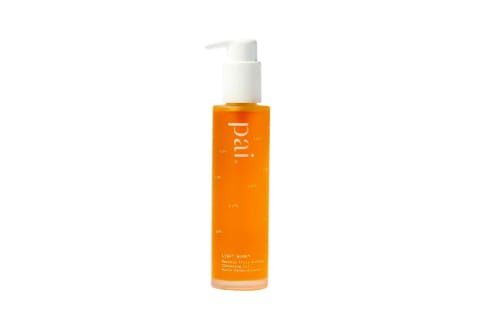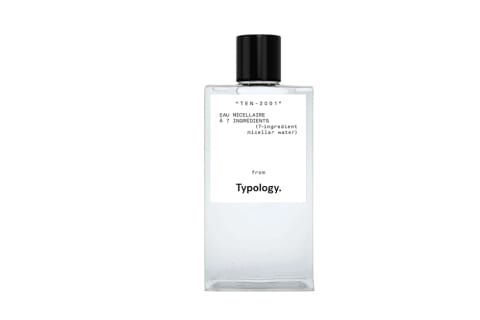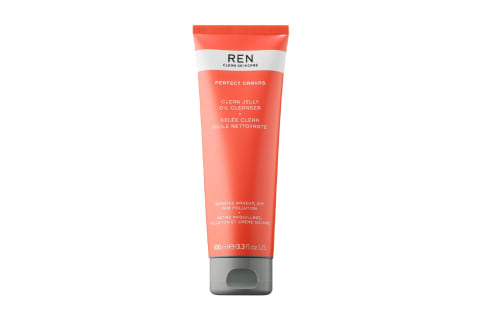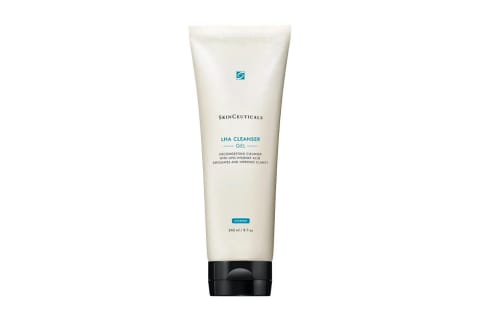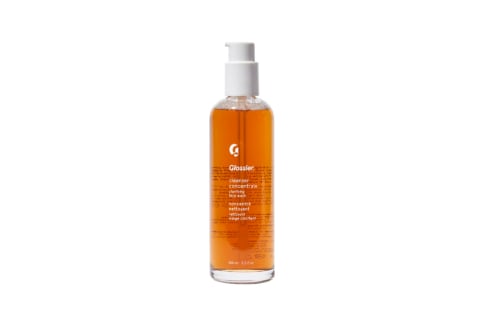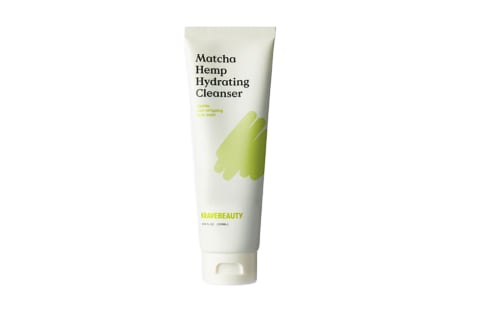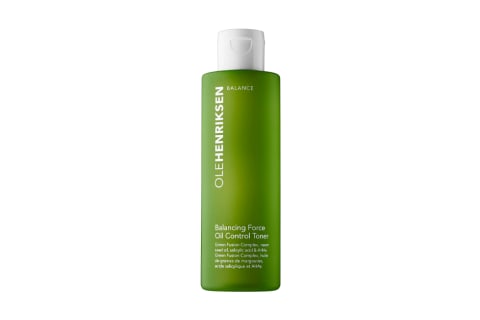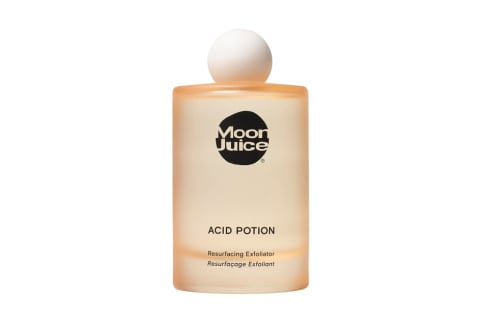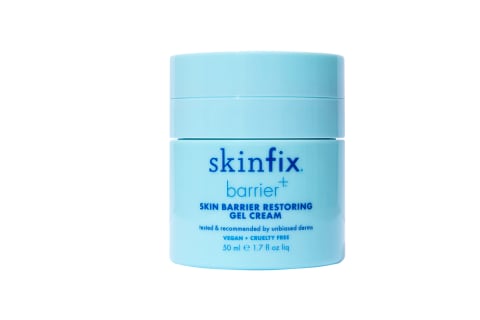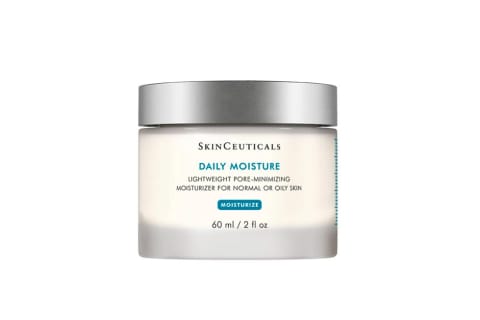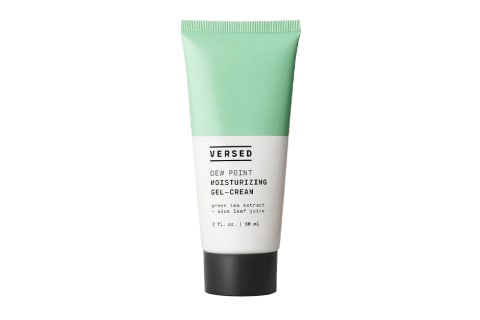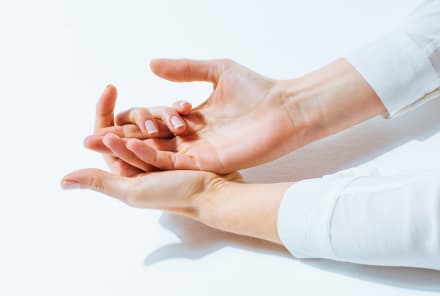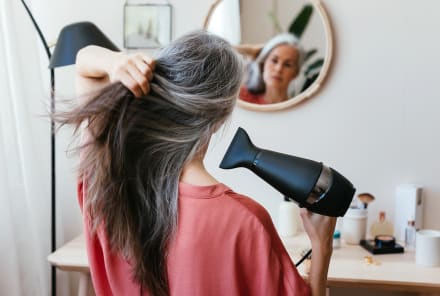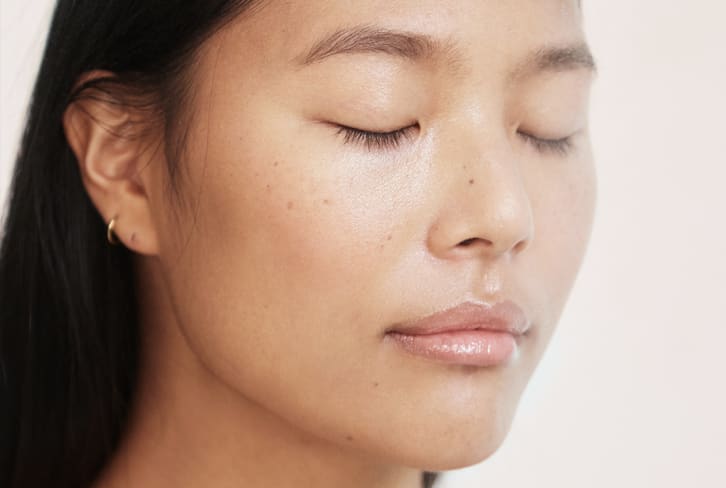Advertisement
A Derm-Approved Skin Care Routine For Oily Skin + Best Products


If you reach for oil blotting sheets or frequent powder touch-ups, you just might have oily skin. While mattifying makeup may help eliminate excess shine, there's actually a whole lot you can do with skin care alone to regulate your skin's oil production.
Skin care routines may have similar steps from person to person (you know the drill: wash, hydrate, SPF); however, the products used should be tailored to your skin type. To save you time, we've asked dermatologists for the best routine for oily skin.
To follow, an expert-approved, step-by-step routine for oily skin and a few winning products to get you started. Of course, every routine should be individualized to the person: So tweak the below as needed to suit your own needs. And for even more personalized care, we always recommend consulting with a skin care professional (dermatologist or aesthetician, for example).
With that out of the way, let's glow on.
Step 1: Remove makeup + SPF (evening step)
As with any evening skin care routine, you must remove your makeup and SPF before going in for a deeper cleanse. "All skin types can benefit from oil cleansing, as oil cleansers work by gently lifting off dirt, debris, and makeup, without harming the skin," organic esthetician Katie Sobelman once told mbg.
If you have oily acne-prone skin, you'll want to opt for a noncomedogenic oil. A few grade-A options include jojoba oil, rosehip oil, hemp seed oil, evening primrose oil, sea buckthorn oil, tea tree oil, grapeseed oil, and tamanu oil.
If oil cleansers just aren't your thing, there are other options. Cleansing balms are oil-based, but have a texture more similar to gel or cream cleansers so folks find the more sensorially appealing. Or you can opt for micellar water and a reusable cotton pad instead.
Shop these products:
Step 2: Cleanse.
Now you can move on to a deeper cleanse. Oily skin will benefit from an active cleanser, specifically, "if you have oily, acne-prone skin and you're dealing with breakouts and clogged pores," board-certified dermatologist Whitney Bowe, M.D., FAAD, tells mbg.
Cleansers with salicylic or glycolic acid are preferable, board-certified dermatologist Jeremy Fenton, M.D., tells mbg. "These not only help to exfoliate the skin but also help to control oil," he explains.
Shop these products:
Step 3: Toner or essence.
Let's be clear—toners aren't a necessity when it comes to basic skin care. That being said, if you want to add a toner as an extra step, then you'll have to decide between an astringent, an essence, and a classic toner.
Astringents like witch hazel will help to minimize excess oil. That being said, if you're using other oil-control products throughout the routine, you may opt for a hydrating toner or essence to restore moisture instead. Why? Oil control is all about balance, and if you strip your skin too much it may spur your skin into producing more sebum. Kind of the opposite effect of what we're trying to get here, no?
If you get oily in the T-zone only (i.e., have combination skin), then using an astringent toner in that area only may be a more strategic choice. This way, you'll get the benefit of an astringent where you need it and prevent drying out other areas on the face.
Shop these products:
Step 4: treat (day).
Serums are considered your treatment step–as they contain a more concentrated dose of ingredients that treat skin concerns. For those with oil-prone skin, reducing shine and balancing oil production tend to be the most pressing issues during the daytime. (More on how to treat the skin at night in a moment.) “Balancing,” “mattefying” and “oil-control” are all great buzz words to look for when shopping.
As for the formula, keep an eye out for soothing ingredients, such as green tea, niacinamide, and hyaluronic acid. "Niacinamide and green tea also have data with decreasing oil production," board certified dermatologist Kanchanapoomi Levin, M.D., told us about managing an oily t-zone.
Some of these ingredients have the added benefit of having antioxidant properties, too! This means they can help reduce free radical damage in the skin and manage oxidative stress. So not only are they helping balance the skin, but they’re improving its health long term.
Step 4: Treat (evening).
Here's where the magic happens. While you won't want to use retinol and exfoliants on the same evening, they will both come in handy for those with oily skin when used in a cyclical routine (yes, we're talking about skin cycling).
On the evenings you choose to exfoliate, pick your acids wisely. "Glycolic and salicylic acid are great exfoliants for oily skin," Fenton explains. Salicylic acid in particular may be a better choice for those with oily and acne-prone skin. "This beta-hydroxy acid is oil-soluble, allowing it to penetrate deep into pores, unclogging them," board-certified dermatologist Ramya Garlapati, M.D., explains.
One perk of having oily skin is that you may tolerate retinol products better than those with dry skin. Not only will you reap the benefits of retinol for healthy skin aging, but you'll also get the added bonus of reducing excess oil production, Fenton says.
If you have oily and acne-prone skin, you may want to go for something a bit stronger—like retinaldehyde or prescription-grade retinoids like tretinoin or Tazorac. Be sure to consult your dermatologist if your breakouts aren't easing up with your over-the-counter skin care products.
Shop these products:
Step 5: Moisturize.
Even the oiliest of skin needs a moisturizer—don't believe the false narrative that your sebum will suffice as a hydrator. That being said, it's important to pick a moisturizer designed for your skin type to avoid pore-clogging or excess shine. The simple answer: Gel or gel creams over heavy-duty moisturizers.
"Gels or gel creams have a higher water content and are usually oil-free and are quickly absorbed into the skin," Garlapati says. On the flip side, creams are generally oil-based and will leave the skin feeling a bit greasy–which is why they're ideal for dry skin instead.
A few hero ingredients to look for in your oily skin moisturizers include:
- Niacinamide
- Hyaluronic acid
- Glycerin
- Aloe vera
Shop these products:
Step 6: Sunscreen.
Lots of folks with acne-prone or oily skin complain that sunscreens only further clog their pores or make their skin appear shinier. Not to fear, newer SPF options on the market are specifically designed for this skin type: When it comes to SPF, you'll want to look for a lightweight, oil-free product to mitigate a greasy feel post-application as well. Check out our favorite sunscreens for acne-prone skin.
How to determine if you have oily skin.
The quickest way to determine whether your skin is oily, dry, or somewhere in the middle is to wash your face and let it sit for about 30 minutes. If your skin feels oily to the touch, that's a surefire sign you have oily skin.
"For the most part, those with oily skin will be able to wash their face several times per day and not have issues with dry skin," Fenton explains. This doesn't mean you should wash your face more than twice a day, but the fact that your skin doesn't dry out speaks volumes.
Morning & night skin care swaps
The above routine is a great foundation to build your own personalized routine upon; we’ve noted in the article which steps are better suited for evening versus morning application. Outside of those steps that need to be applied at certain times of the day, you really don’t need to change your morning and evening routine if you don’t want to.
However, here are some general tips if you’re looking for ways to tailor your routine to AM and PM use.
- Double-cleanse in the evening if you’re wearing makeup and SPF that day. As these typically take more work to remove, a double-cleanse is a gentle, yet effective, way to ensure there’s no residue left on the skin.
- Only use retinols at night. There is some data showing that for some skin types, retinol can increase the chance of burning1. This tends to subside after a month or so. Additionally, many modern forms of retinol can be used during the day should you wish (for example, adapalene and tazorotene are photostable). However given they should only be used once a day, they’re best suited for evening so you can use antioxidants or other ingredients in the morning.
- Soothing ingredients are great anytime of day. Irritation often triggers more oil production, some one way to help manage sebum is to soothe the skin! These ingredients can be used in both the morning and night.
- Use thicker formulas in the evening. At night skin is more susceptible to transepidermal water loss. Thicker, more occlusive formulas can help trap in moisture—keeping your skin hydrated throughout the night. Often people with oily skin avoid thicker textures because they can feel too greasy throughout the day. But while you sleep is an excellent time to incorporate rich creams.
- SPF during the day. All skin types, ages, and tones should wear sunscreen. Obviously it’s only needed when you’re exposed to light, so feel free to skip it during the evening.
Tips for men with oily skin
We really try not to genderize taking care of your skin health, as we all should prioritize caring for our complexions. So the above routine will work for folks of any gender—skin care is skin care!
However, here are some skin care tips that tend to resonate with male-identifying people.
- Keep steps to what you’ll do consistently. The most important part of a skin care routine is that you do it every single day. So build a routine that you enjoy, don’t find overwhelming, and will stick to. That may mean it’s only two steps (wash and moisturize, please), but that’s a great basis if nothing else.
- Thoroughly cleansing your face in the evening is important. So even if you personally don’t wear makeup (although some men do!), you should prioritize removing buildup, pollution, and excess sebum from the skin. This may not require a double-cleanse, but it certainly will require more than splashing your face with water—or nothing at all.
- Regularly exfoliate. If you aren’t interested in using multiple treatment steps (i.e. nightly retinol or serums), then do a weekly exfoliation routine to encourage skin cell turnover, remove excess buildup, and unclog pores. This can be an exfoliating mask or scrub that you do in the evening.
- Always wear sunscreen. If you don’t want to add another step to your routine, simply find a daily moisturizer with SPF in it.
Tips for teens with oily skin
Skin changes with time and life cycles. This is due to hormones and shifts in the skin structure that happen naturally with time. So, typically, how you treat your skin as a teen will look different than how it might in later decades.
Here’s the good news: Skin in your teens tends to be more resilient and deals with stronger products easier. So not only will the above skin care routine work for teens, teens will be able to tolerate treatment steps more regularly (i.e. retinol and salicylic acid).
However, oily skin in your teens can also come coupled with breakouts. So along with managing sebum production, you may want to have blemish spot treatments on hand to address breakouts when they occur.
FAQ
Should you use oil-free products if you have oily skin?
"Since those with oily skin are more prone to breakouts, it's best to opt for products that are oil-free," Garlapti says. If you do choose a product with oils in it, be sure it's one of the noncomedogenic oils listed above.
How often should you exfoliate if you have oily skin?
"Oily skin types should exfoliate two to three times per week as tolerated," Garlapti explains. It's best to start out exfoliating twice a week and work your way up if need be. This will help reduce the chance of over-exfoliation.
What's the difference between oily and combination skin type?
If you have combination skin, you'll become oily in the T-Zone—this consists of the nose, middle of the chin, and center of the forehead. If you have oily skin, this will occur on the entire face rather than just on the T-Zone.
The takeaway.
While powder and oil blotting sheets may work wonders at the moment, starting with a tailored skin care routine is the key to regulating oil production over time. Be sure to regularly exfoliate with glycolic or salisylic acid, reach for gel or gel-cream moisturizers, and only use noncomedogenic oils if your skin is acne-prone. If your skin is oily on the surface but feels dry underneath, you may have oily dehydrated skin—here's what to do.
Watch Next
Enjoy some of our favorite clips from classes
Enjoy some of our favorite clips from classes
What Is Meditation?
Mindfulness/Spirituality | Light Watkins
Box Breathing
Mindfulness/Spirituality | Gwen Dittmar
What Breathwork Can Address
Mindfulness/Spirituality | Gwen Dittmar
The 8 Limbs of Yoga - What is Asana?
Yoga | Caley Alyssa
Two Standing Postures to Open Up Tight Hips
Yoga | Caley Alyssa
How Plants Can Optimize Athletic Performance
Nutrition | Rich Roll
What to Eat Before a Workout
Nutrition | Rich Roll
How Ayurveda Helps Us Navigate Modern Life
Nutrition | Sahara Rose
Messages About Love & Relationships
Love & Relationships | Esther Perel
Love Languages
Love & Relationships | Esther Perel
